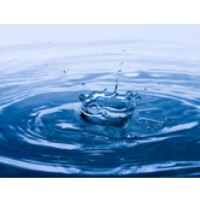State Lets Oil Drillers Use Hundreds of Wells to Inject Wastewater into Central Valley Aquifers

Oil companies have been tainting aquifers in the Central Valley for years, if not decades, but the numbers, and the ramifications, are only slowly becoming known now.
On Sunday, the San Francisco Chronicle reported that state records show government allowed the companies to drill at least 171 waste-disposal wells into aquifers of drinkable water and 253 more into aquifers that could be (or had been) drinkable with treatment. Another 40 wells pumped water into aquifers for which there is no known data on water quality.
“It is an unfolding catastrophe, and it’s essential that all oil and gas wastewater injection into underground drinking water stop immediately,” Kassie Siegel, director of the Climate Law Institute at the Center for Biological Diversity environmental group, told the Chronicle.
Back in October, the center calculated, using state documents, that 3 billion gallons of oil industry wastewater had been injected into aquifers via at least nine wells. The wells are used to dispose of the enormous amounts of briny water, toxic hydraulic fracturing (fracking) chemicals and other pollutants that surface during the extraction of oil.
The nine wells were among 11 in Kern County shut down in July 2014 by the state Division of Oil, Gas and Geothermal Resources (DOGGR) just days before it was announced that 95 other wells were also being looked at. The two others re-opened almost immediately.
The State Water Resources Control Board (SWB) said in October that another 19 wells may have tainted protected aquifers and dozens more might have befouled aquifers of unknown water quality. California is in the process of trying to get a handle on who is fracking where with what after passing Senate Bill 4 last year, the state’s initial stab at regulating fracking.
Needless to say in drought stricken California, preserving drinkable water has a high priority. Whether it has a higher priority than drilling for oil, among the powers that be, remains to be seen. Some critics of the law called for a fracking moratorium while the state determined how to regulate the new extraction techniques.
A lot of the aquifer damage is done by oil companies using newly-refined high tech extraction techniques that employ high-pressure water to blast sand, chemicals and other materials into oil wells to reach deposits otherwise out of reach. The wells bring back up most of the detritus and contaminated water, which is then injected back into the ground.
The U.S. Environmental Protection Agency (EPA) is not happy with the way California regulates its injection wells. A 2011 report (pdf) pointed out that state standards protect just a fraction of aquifers that the federal Safe Drinking Water Act requires. The feds said state inspectors were allowing injection wells to operate at dangerously high pressure rates and weren’t properly assessing the geology around them.
The EPA has relied on DOGGR since an agreement in 1983 to enforce federal safe water standards. The feds provided a list of aquifers in the state that were exempt from the Act and could be used for injection, but apparently the state’s copy of the agreement lists 11 more exempt aquifers than the fed version.
“We cannot tell, nor can the EPA, which version is correct,” DOGGR chief Steven Bohlen told the Chronicle.
The EPA set a February 6 deadline last December for the state to deliver a comprehensive plan for complying with federal regulations.
–Ken Broder
To Learn More:
State Let Oil Companies Taint Drinkable Water in Central Valley (by David R. Baker, San Francisco Chronicle)
California Regulators Allowed Oil Industry to Drill Hundreds of Wastewater Injection Wells into Aquifers with Drinkable Water (by Mike Gaworecki, DeSmogBlog)
California Has Been Letting Oil Companies Dump in Protected Water Sources, and Conservationists Are Livid (by Lydia O'Connor, Huffington Post)
Frackers Dump 3 Billion Gallons of Dangerous Wastewater into Aquifers (by Ken Broder, AllGov California)
- Top Stories
- Controversies
- Where is the Money Going?
- California and the Nation
- Appointments and Resignations
- Unusual News
- Latest News
- California Forbids U.S. Immigration Agents from Pretending to be Police
- California Lawmakers Urged to Strip “Self-Dealing” Tax Board of Its Duties
- Big Oil’s Grip on California
- Santa Cruz Police See Homeland Security Betrayal in Use of Gang Roundup as Cover for Immigration Raid
- Oil Companies Face Deadline to Stop Polluting California Groundwater





